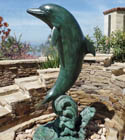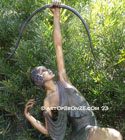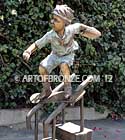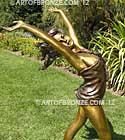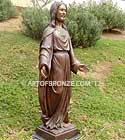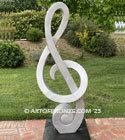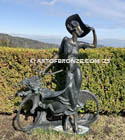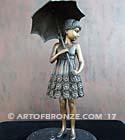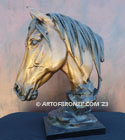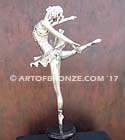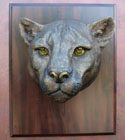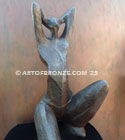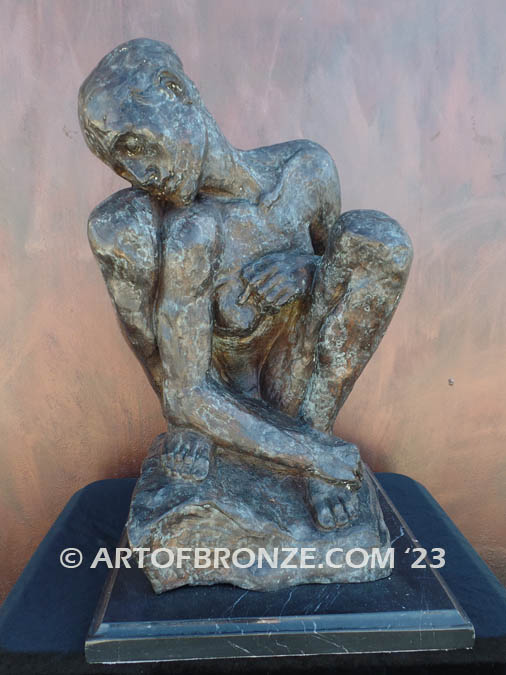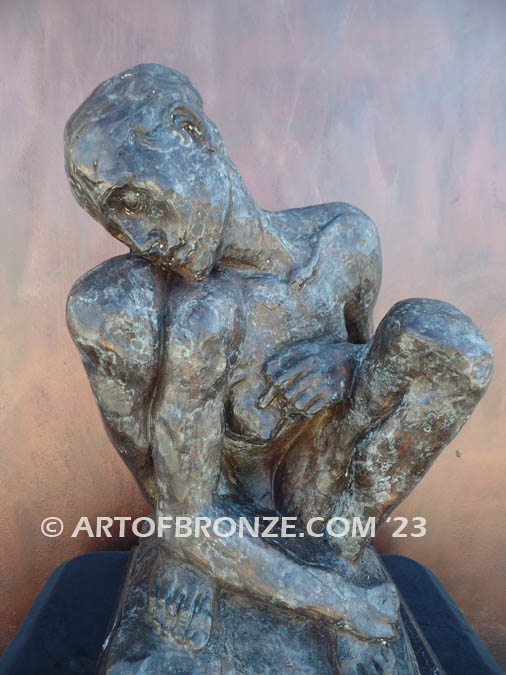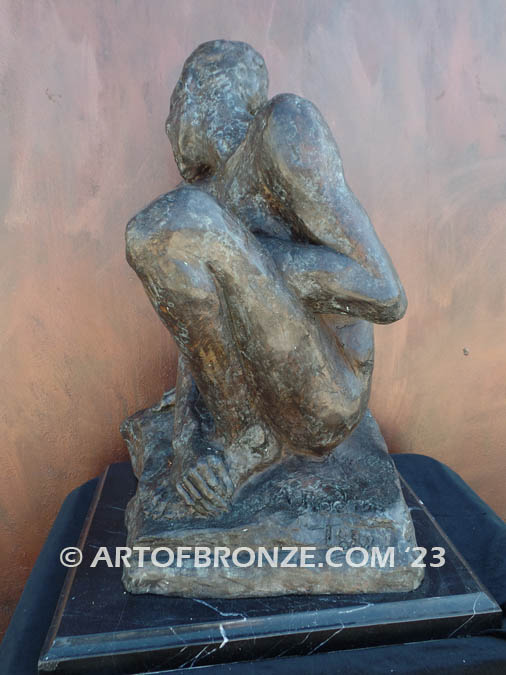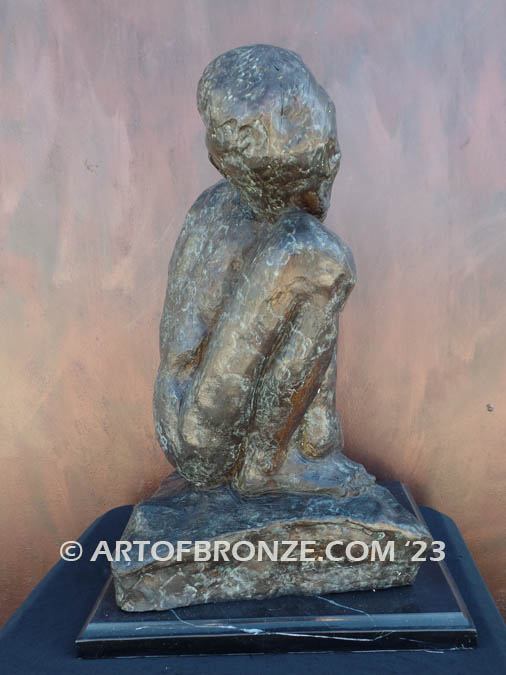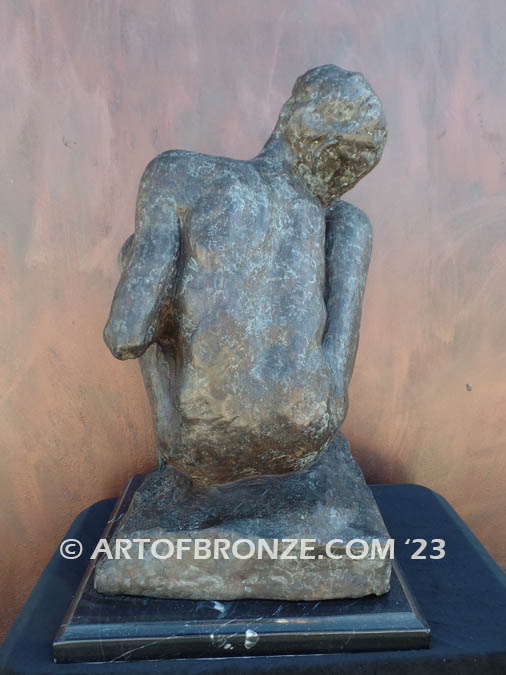Art of Bronze proudly offers this beautiful aftercast of Auguste Rodin’s bronze sculpture, “The Crouching Woman.” This mesmerizing re-creation stands as a testament to the artist’s profound ability to encapsulate human emotions and dynamic movement in the medium of sculpture. The piece unfolds a poignant narrative, portraying a nude woman in a contemplative crouch, her arms embracing her knees, and her gaze directed downward. Rodin’s mastery is evident in the sinuous and elongated form of the figure, effortlessly conveying both fragility and fluidity.
In a departure from Rodin’s earlier works during the Romantic era, characterized by optimism, beauty, and gracefulness, “The Crouching Woman” unveils a different facet of the artist’s perspective. This sculpture delves into a more complex exploration of human experience, marking a significant departure from the prevailing artistic sentiments of its time.
“The Crouching Woman” serves as a prime example of art at the crossroads of classical and modernist movements. In its honest portrayal of emotions and its embrace of simplicity, it becomes a timeless piece that transcends its era, resonating with viewers across different periods and perspectives.
Rodin is known for his ability to forgo realism and decoration in favor of using texture, surface details, and light and shadow to convey emotion. His focus on inner emotion and suffering is a turning point in the history of art and serves as a hallmark of Modernism.
Auguste Rodin (1840 – 1917) French Sculptor, born in Paris in 184, died in Meudon in 1917. He is considered one of the prominent sculptors of the modern era. His statues St. John the Baptist Preaching, Eve, The Age of Bronze, and The Thinker are world famous. Rodin died on Nov. 17, 1917, and was buried at Meudon. When Rodin was 76 years old he gave the French government the entire collection of his own works and other art objects he had acquired. They occupy the Hotel Biron in Paris as the Musee Rodin and are still placed as Rodin set them. He played a pivotal role in redefining sculpture in the late nineteenth century, both excelling at and transcending the academic Beaux-Arts tradition. His work redefined sculpture. Possessing an ability to organize a complex, turbulent, deeply pocketed surface, he set himself apart from the predominant figure sculpture tradition of the time. Rodin’s most notable sculptures were roundly criticized during his lifetime. A pose might be considered too informal; the lack of a traditional theme found wanting; the exactness of his forms too real; or the “unfinishedness” of his surfaces disrespectful.
We hope you enjoy browsing our wide-ranging selection of over 100 beautiful figurative & classical works of art cast in the ‘lost wax’ process. Each sculpture is hand finished in a one-of-a-kind patina coloring. Because of the process of heating up bronze and applying chemicals, no two patinas are exactly the same. Additionally, our team of professionals can create custom patinas to meet your specific needs.
Call Art of Bronze today at (805) 908-5355 to learn more about our – indoor nude figurative bronze sculpture – modern bronze sculpture artwork – nude female sculpture art – Rodin home décor – impressionism sculpture – indoor gallery bronze statue and sculptures.


